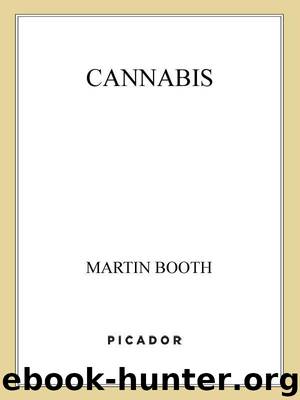Cannabis: A History by Martin Booth

Author:Martin Booth
Language: eng
Format: mobi
Publisher: St. Martin's Press
Published: 2015-06-16T06:00:00+00:00
16
DORA, BEBOP AND THE VIPERS OF LONDON
IN 1900, THE NON-WHITE POPULATION OF GREAT BRITAIN numbered considerably less than ten thousand and yet this did not prevent drugs and their prohibition from being associated with racial issues and ethnic minorities. The only real immigrant community was an insignificant one of peripatetic Chinese sailors in the East End of London where they operated several opium dens occasionally visited by Victorian journalists or, surprisingly, tourists looking for sleaze, corruption and vicarious, exotic excitement. With the passage of the Pharmacy Act of 1868, which made chemists and pharmacists the custodians of drugs and poisons, and the founding of the Society for the Suppression of the Opium Trade, opium had come to be regarded as evil and the Chinese, because of their familiarity with and use of it, came to share its reputation. If stories appeared in the press about drugs, the Chinese were always the opiate fiends and blacks the cocaine fiends. Marijuana hardly ever featured and, until about 1910, this remained the case.
The recreational drug use that had existed in literary circles in the 1890s spread outwards into the higher echelons of society in the decade leading up to the start of the Great War in 1914 by which time cocaine was frequently indulged in by the upper classes, especially in Mayfair, Belgravia, South Kensington and the other fashionable areas of London. With the war, this pattern changed and, by 1920, drugs were regarded as a problem across all the strata of the class system.
Two events caused the drug issue to enter the British political agenda. The first was the 1911 Hague Convention at which Britain agreed to legislate against drug trafficking. The second was a scandal in 1916 when it was discovered that Canadian troops posted to Britain were using cocaine. To address this, a most important piece of legislation was introduced, known officially as Regulation 40B of the already existing Defence of the Realm Act: its acronym was DORA 40B and it made the supplying of cocaine or opium to troops during wartime a very serious offence which was later expanded to include civilians, for whom possession without a doctor’s certificate was a criminal act. Cannabis, morphine and heroin were not covered by DORA 40B but that was immaterial. What it did do was establish the fundamentals of prohibition. The public were not unduly bothered by this; what caused an uproar was that DORA 40B also introduced strictly enforced opening times for public houses, restricting not only the drinking habits of forces personnel in the interests of the defence of the nation, but also those of the public at large.
During the Great War and the 1920s, a very small underground ‘dope’ culture arose with its own urban legends concerning evil foreigners, German spies and white slavery. From the latter came stories of dissolute actresses corrupted by drugs into prostitution or ‘bachelor girlhood’, a synonym for lesbianism. These stories were fuelled in 1918 by the death of a twenty-one-year-old actress, Billie Carleton, who had supposedly died of cocaine poisoning at a Victory Ball.
Download
This site does not store any files on its server. We only index and link to content provided by other sites. Please contact the content providers to delete copyright contents if any and email us, we'll remove relevant links or contents immediately.
Sapiens: A Brief History of Humankind by Yuval Noah Harari(13999)
The Tidewater Tales by John Barth(12405)
Mastermind: How to Think Like Sherlock Holmes by Maria Konnikova(6946)
Do No Harm Stories of Life, Death and Brain Surgery by Henry Marsh(6692)
The Thirst by Nesbo Jo(6452)
Why We Sleep: Unlocking the Power of Sleep and Dreams by Matthew Walker(6371)
Life 3.0: Being Human in the Age of Artificial Intelligence by Tegmark Max(5199)
Sapiens by Yuval Noah Harari(5131)
The Longevity Diet by Valter Longo(4864)
The Body: A Guide for Occupants by Bill Bryson(4598)
The Rules Do Not Apply by Ariel Levy(4537)
The Immortal Life of Henrietta Lacks by Rebecca Skloot(4269)
Why We Sleep by Matthew Walker(4198)
Animal Frequency by Melissa Alvarez(4162)
Yoga Anatomy by Kaminoff Leslie(4111)
The Hacking of the American Mind by Robert H. Lustig(4098)
All Creatures Great and Small by James Herriot(3997)
Barron's AP Biology by Goldberg M.S. Deborah T(3949)
Double Down (Diary of a Wimpy Kid Book 11) by Jeff Kinney(3940)
